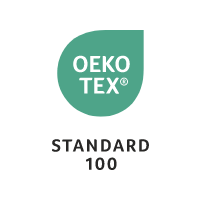Colorfastness test: There are different kind of fastness in different condition some of them are as follows.
Crocking: Through this method, transfer of color of fabric is evaluated in dry and wet condition through crocking machine. Crocking refers to the rubbing off of color from a fabric when subjected to abrasion.
Colorfastness to light: This is for evaluation of color fading in sunlight. How much color would fade in a specified condition of sunlight.
Colorfastness to laundering: This test is basically for the evaluation of fabric color loss due to detergent solution and abrasive action equivalent to home laundering.
Colorfastness to water: Dyed, colored or printed fabrics resistance to water is tested through this method.
Colorfastness to perspiration: This is for determining the color loss of fabric through perspiration.
Construction test: Construction of fabric is based on yarn standard and weaving quality.
Yarn quality and count test: Measurement of yarn thickness, plies and quality of yarn spinning and weave, comes under this test.
Weight test: Measurement of fabric mass per unit area / weight, comes under this test.
Performance tests: Dimensional changes in fabrics and snagging resistance of fabrics come under this test.
Shrinkage / dimensional changes: This is generic term for changes in length and width of fabric in a specified condition of wet processing.
Pilling resistance: Formation of pills and irregular surface due to rubbing is measured through this test.
Snagging resistance of fabrics: Snagging is common feature in woven and knitted fabrics and it is created when an object pulls, plucks, scratches, drags the yarns from its normal pattern.
Tear resistance: Average force required to tear the fabric from a fixed distance.
Strength test: Determination of breaking force of woven textile fabrics in dry and wet both condition while clamping and pulling the fabrics in opposite direction.
Stretch and growth test: This test is recommended for the knitted fabrics. In specific condition and specific load, in length and width, how much elongation happens in knitted fabrics.
Seam slippage: Measurement of force required to slip the seam from fabrics, which are joined together. In this method two fabrics which are joined together through the stitches are pull in opposite direction to know the seam stability.
pH test: This is part of main test and before going to make any solution of chemical, water pH is tested for accuracy.
Azo test: Chemical used in dyeing and printing of fabrics or sewing threads are as per the guidelines or not? Chemicals which are not good for skin must not be used.
Accessories tests: Accessories used in products such as button, zip and rubber band are checked.
Needle detection: This is done to check whether there are any broken needles in the products during the manufacturing process that can cause injury to consumers, particularly to children.






































